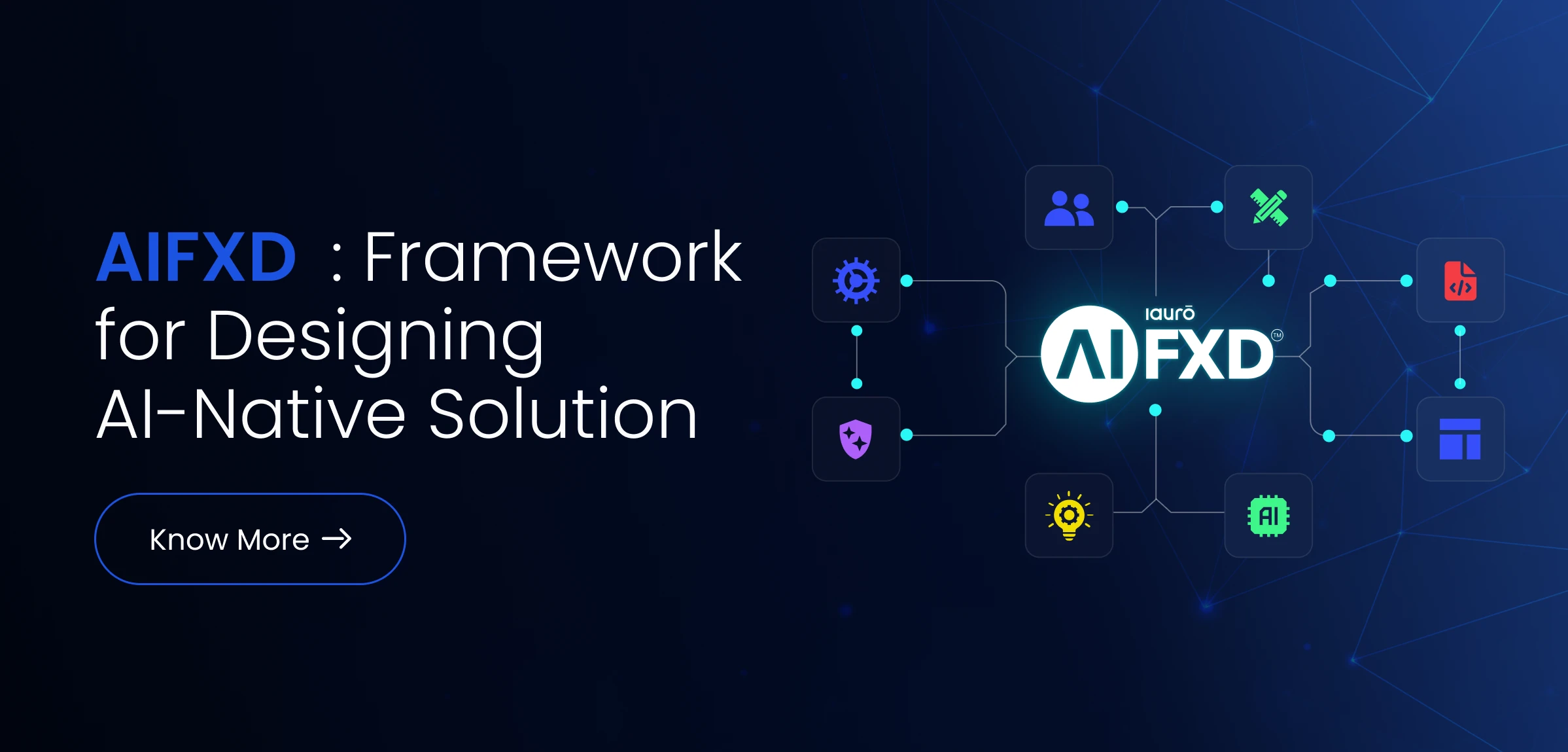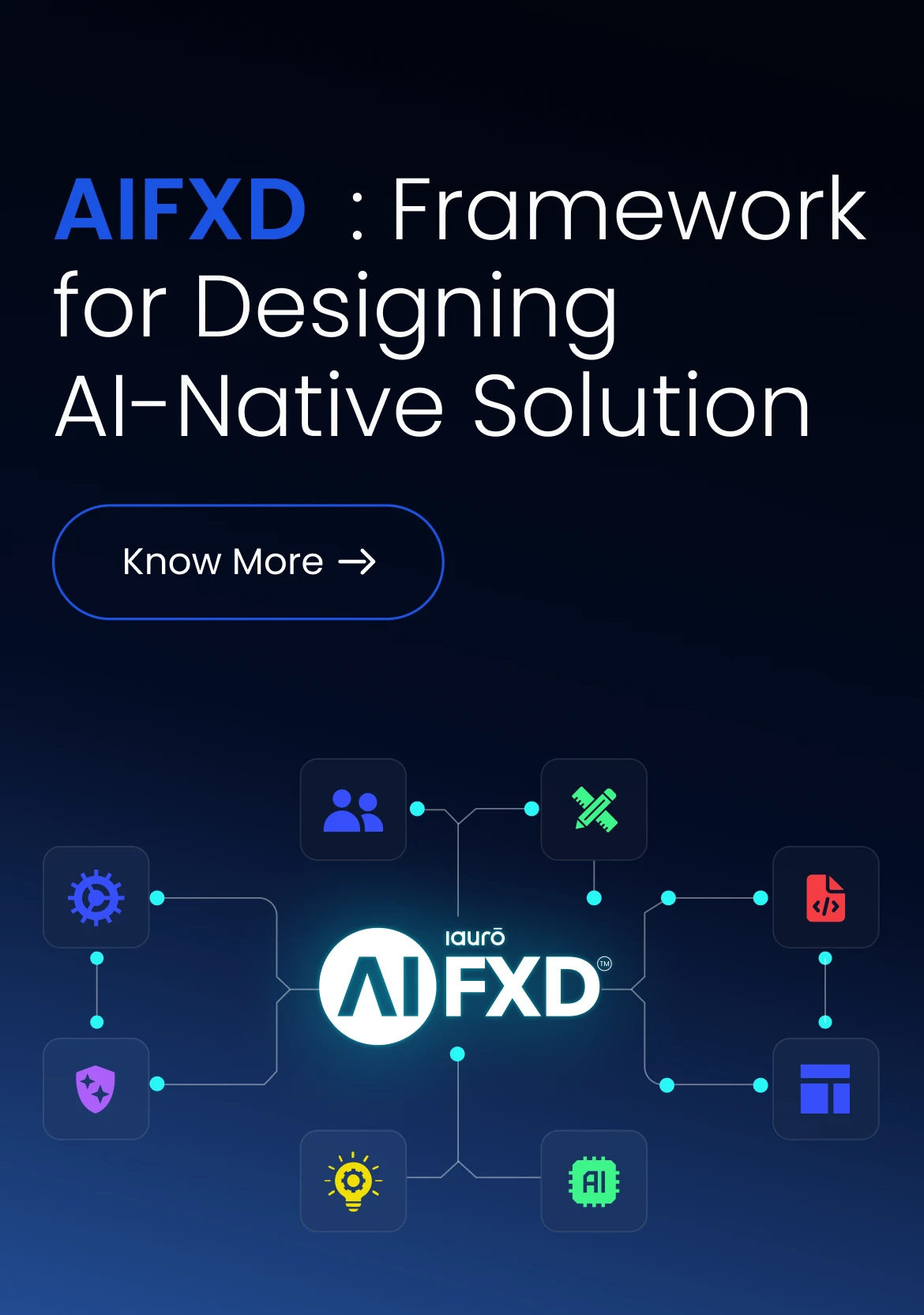Why Intelligence Needs a Design System:
The Case for AI-Native Design Thinking


The way we build digital products is fundamentally changing. While traditional software development follows predictable patterns—user clicks button, system executes function, result appears—AI-native applications operate in a world of probabilities, context, and continuous learning. Yet most teams are still designing AI features the same way they’ve always built software: as an afterthought, added onto existing interfaces and workflows.
This approach is failing us. If you’ve used any AI-powered product lately, you’ve probably experienced this jarring inconsistency. One moment you’re thinking “wow, this AI really gets me,” and the next you’re wondering if you’re even using the same application. Users are encountering AI that feels unpredictable, unexplainable, and inconsistent. Teams are struggling to align on what their AI should do, how it should behave, and why it makes the decisions it does.
This isn’t a technical problem. It’s not that AI is too complex to design well. The problem is that we’re designing intelligence without a system. The solution requires a fundamental shift in how teams design AI-powered products. Instead of adding intelligence as an afterthought, organizations need structured frameworks for designing AI behavior from the ground up.
The Missing Layer: Why Intelligence Needs a Design System
The software industry faced a similar challenge with user interfaces in the early 2000s. Different teams created their own buttons, forms, and navigation patterns. The result was inconsistent user experiences, duplicated effort, and constant reinvention of the wheel. Then UI design systems emerged, bringing order and scalability to interface design. Suddenly, teams could build faster, more consistently, and with shared understanding across disciplines.
Today, we’re in the same chaotic place with AI—but there’s no design system for intelligence behavior.
Without structure, teams create ad hoc prompts, inconsistent logic, and black-box outcomes. A customer service bot might be helpful on Monday but robotic on Tuesday, simply because different team members wrote different prompts. An AI-powered recommendation engine might surface brilliant insights in one part of the application but completely miss the mark in another, because there’s no systematic approach to how the AI reasons through decisions.
Intelligence design isn’t just about prompts—it encompasses the entire reasoning ecosystem: how AI interprets context, provides feedback to users, explains its decisions, and determines next-best actions. Just as UI design systems define how interfaces should look and behave, intelligence design systems define how AI should think and respond.
The Current State: Building AI Without a Blueprint
Today’s AI implementation follows a familiar but problematic pattern. Teams start with existing interfaces and workflows, then identify places where AI might add value. They build these features in isolation, often without consideration for how they work together or how users will understand them.
This approach creates several critical problems:
Inconsistent User Experiences: Users encounter different AI personalities across the same application. One feature might explain its reasoning clearly, while another operates without any transparency. Some provide confidence indicators, others do not. The result is a fragmented experience that users cannot predict or trust.
Team Misalignment: Without shared frameworks, different teams work with different assumptions about AI behavior. UX designers create mockups based on one understanding of AI capabilities, developers build to different specifications, and AI engineers optimize for metrics that may not align with user needs.
Scaling Challenges: As organizations move from prototypes to production platforms, they discover that their disconnected approach does not scale effectively. Each new AI feature requires rebuilding fundamental elements like explanation mechanisms, error handling, and user feedback systems.
Trust and Adoption Issues: Understanding problems, user-centered design and identifying perception of inconsistencies remain critical challenges. When users cannot predict how AI will behave, they lose confidence in the system and avoid using AI features.
Introducing AIFXD™: A Design System for Intelligence
AIFXD™ addresses these challenges through a structured framework for designing AI-native applications. Developed by iauro, this framework provides the systematic approach that teams need to create consistent, trustworthy AI experiences.
Unlike traditional design systems that focus on visual elements, AIFXD™ provides systematic approaches to designing AI behavior, communication, and user interaction patterns. It enables teams to:
Design AI-First: Rather than retrofitting AI into existing workflows, AIFXD™ helps teams design applications where intelligence is built in from the start. This approach considers AI capabilities during initial product design phases, not as an afterthought.
Establish Shared Language: AIFXD™ provides a domain-specific language (DSL) for AI design that bridges the gap between UX designers, developers, and AI engineers.When everyone speaks the same language about AI behavior, alignment becomes achievable
Ensure Consistency: Just as UI design systems ensure button styles and navigation patterns remain consistent across an application, AIFXD™ ensures that AI behavior—prompts, reasoning patterns, explainability, and feedback mechanisms—remains consistent and predictable.
Build-In Governance: AIFXD™ includes considerations for security, privacy, and compliance from the design phase. This is essential for regulated industries and high-stakes applications.
The framework addresses the full spectrum of AI behavior design: how AI interprets user inputs, processes context, makes decisions, explains its reasoning, provides feedback, and determines next-best actions. It’s a systematic approach to creating AI that feels intentional, explainable, and aligned with user needs.
Actual Problems that AIFXD™ Solves
AIFXD™ addresses practical challenges that teams face when building AI products:
Alignment Issues: When different teams work with different assumptions about AI behavior, products become inconsistent. AIFXD™ provides shared frameworks that ensure all team members understand how AI should behave in different contexts.
User Trust Problems: Users need to understand when and why to trust AI recommendations. AIFXD™ includes systematic approaches to transparency and explanation that build user confidence.
Scaling Difficulties: As AI features multiply, maintaining consistency becomes increasingly difficult. AIFXD™ provides reusable patterns and components that scale across different features and use cases.
Compliance Requirements: Regulated industries need to audit and explain AI decisions. AIFXD™ builds traceability and explainability into the design process, making compliance more manageable.
The Business Case for Systematic AI Design
The benefits of systematic AI design extend beyond user experience improvements. Organizations that adopt structured approaches to AI design see:
Faster Development: Teams spend less time rebuilding basic AI interaction patterns and more time on differentiated features.
Better User Adoption: Consistent, predictable AI behavior increases user confidence and feature adoption.
Reduced Technical Debt: Systematic approaches prevent the accumulation of inconsistent AI implementations that require future refactoring.
Improved Compliance: Built-in governance and explainability make regulatory compliance more straightforward.
Why This Matters Now
We’re in a unique moment in technology history. The GenAI wave is pushing every company to become an AI company, but most are building without the maturity and structure that production AI platforms require.
The risks of unstructured AI development are becoming increasingly clear:
- Hallucinations and errors that undermine user trust
- Ethical and bias concerns that can damage brand reputation
- Missed business value when AI implementations don’t align with user needs
- Regulatory compliance issues as AI governance becomes more stringent
Organizations that invest in structured approaches to AI design now will build more reliable, trustworthy, and valuable AI products. Those that don’t will find themselves rebuilding their AI implementations from scratch when their ad hoc approaches hit scaling limits.
The companies that succeed in the AI era won’t necessarily be those with the most advanced AI technology. They’ll be the ones that can design AI experiences that users understand, trust, and find genuinely valuable.
Organizations need a framework to move from proof-of-concepts to production platforms. AIFXD™ provides that bridge, helping teams maintain the speed and innovation of rapid prototyping while building the structure and reliability required for production AI systems.
Looking Forward: The Need for AI Design Maturity
The challenge isn’t technical—we have the AI capabilities to build remarkable products. The challenge is organizational and methodological. We need to mature our approach to AI design with the same rigor we’ve applied to other aspects of product development.
Just as responsive design became essential when mobile usage exploded, AI-native design thinking is becoming essential as AI capabilities become ubiquitous. Organizations that invest in structured approaches to AI design will build more reliable, trustworthy, and valuable AI products.
The companies that will succeed in the AI era aren’t necessarily those with the most advanced AI technology—they’re the ones that can design AI experiences that users understand, trust, and find genuinely valuable.
Conclusion: Design Intelligence Like You Design Interfaces
Modern software development would be impossible without systematic approaches to interface design. Design systems, component libraries, and style guides are standard practice because they enable consistent, maintainable, and scalable user experiences.
AIFXD™ represents a fundamental shift in how we approach AI product development. It’s how teams bring structure, clarity, and trust to AI-native product development. It’s the bridge between rapid AI prototyping and reliable, scalable AI platforms.
The organizations that succeed in building AI products will be those that recognize intelligence design as a core discipline, not an afterthought. They will treat AI behavior design with the same strategic importance they give to interface design, user research, and software architecture.
As AI capabilities continue to expand, the need for systematic approaches to AI design will only grow. AIFXD™ is that framework, helping teams design AI that’s not just powerful, but explainable, trustworthy, and genuinely aligned with user needs.
Ready to bring structure and clarity to your AI product development? Learn more about AIFXD™ and how iauro’s framework can help your team design AI-native products that users trust and value. Talk to our experts to get started.
Ready to transform your
business with cutting-edge
software solutions?
Let’s connect and explore
how our expertise can elevate your business

